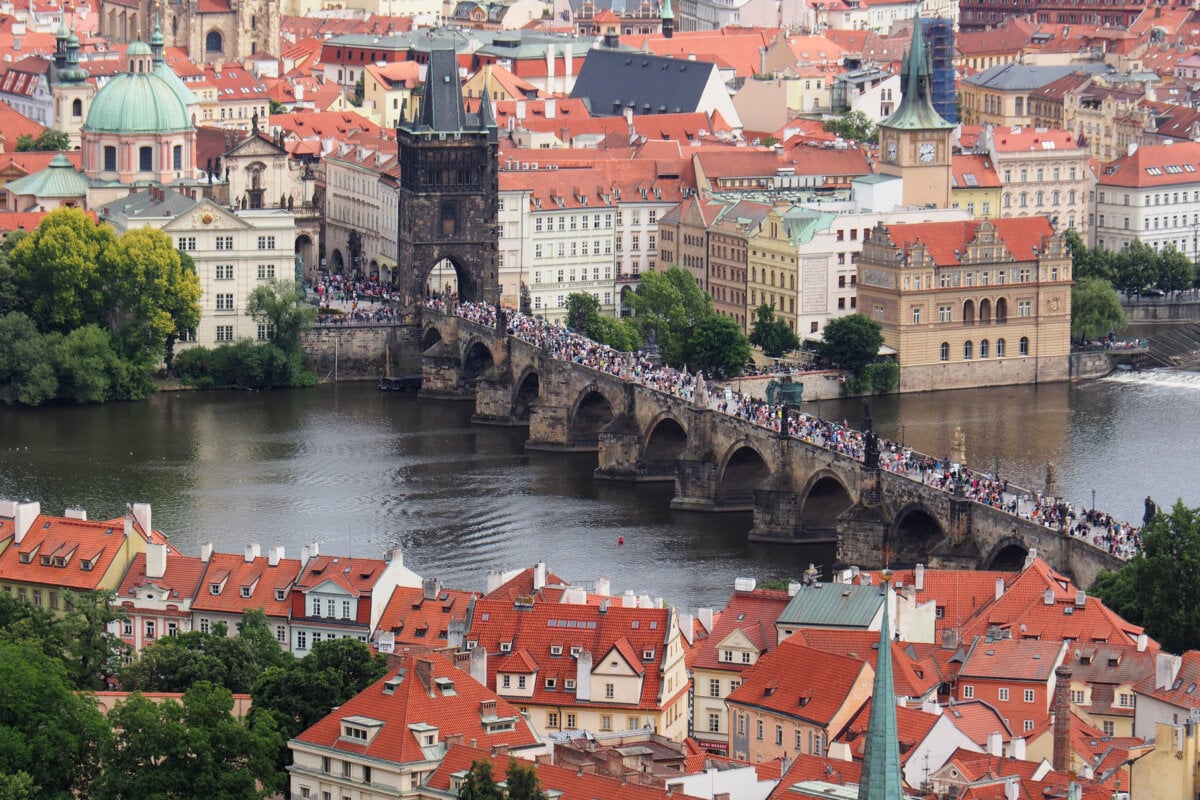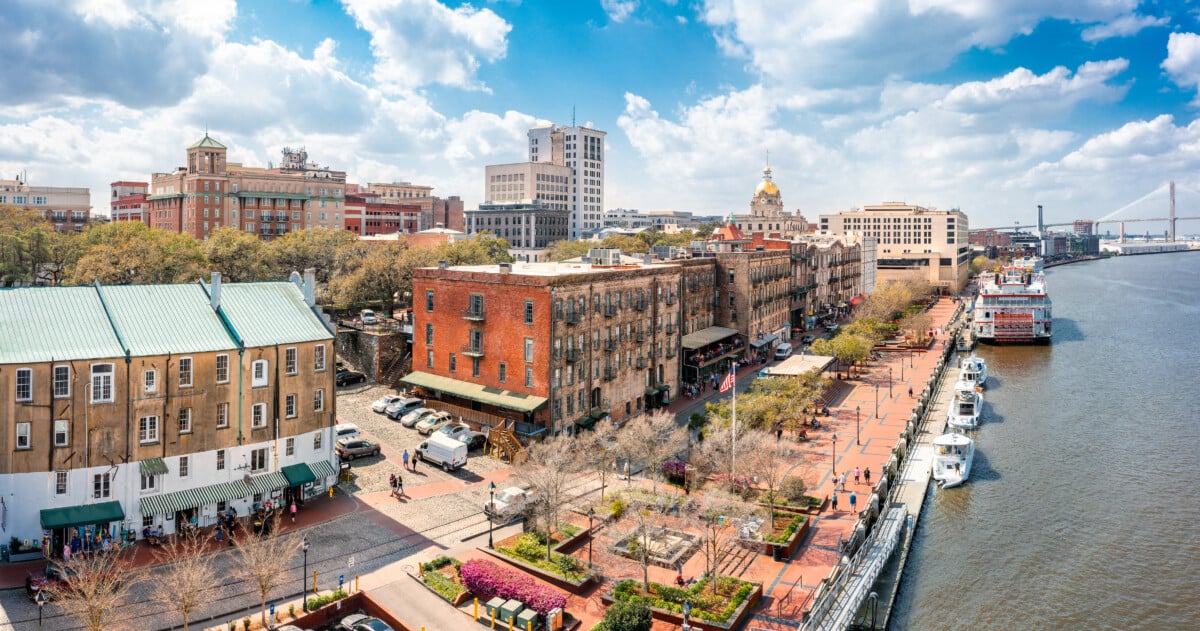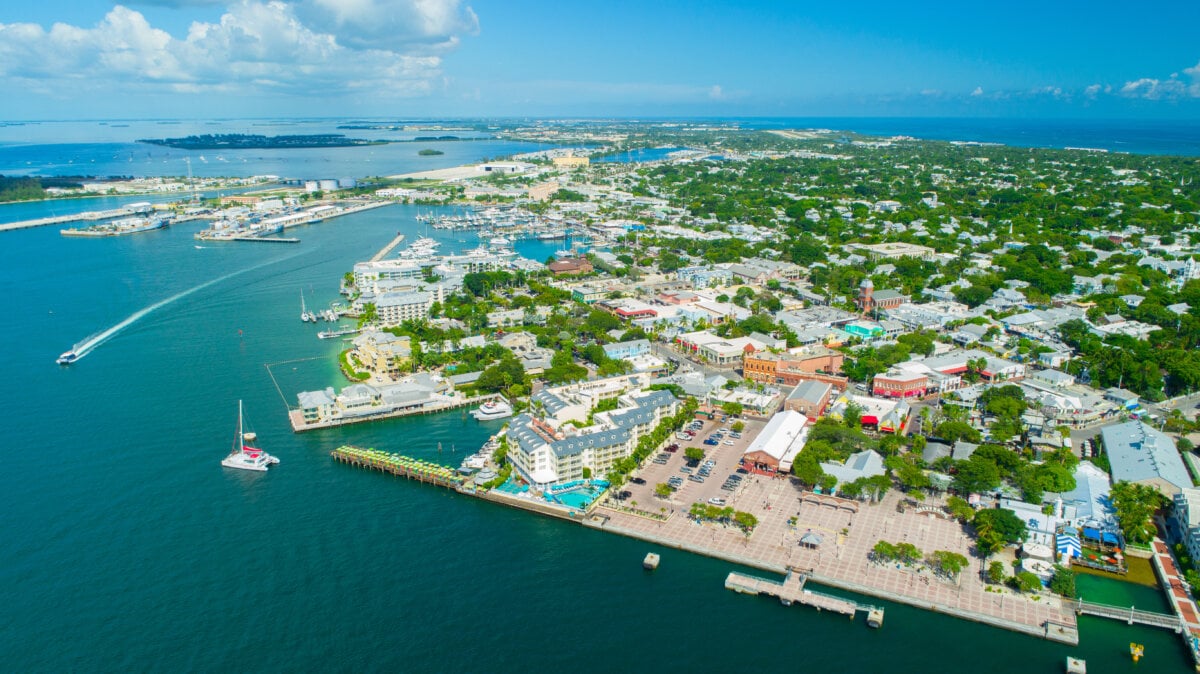There’s no shortage of UNESCO World Heritage Sites in Europe to visit. In fact, there are over 400 to choose from to try to fit into your next European trip itinerary (or a lifetime’s worth of itineraries).
From Italy, boasting the most UNESCO sites in all the world, to the Czech Republic, claiming the smallest, Europe has some truly stunning UNESCO sites. Any trip to Europe can easily fit in a UNESCO site worth visiting with ease!
Europe is bursting at the seams with sites of significant historical heritage that define the development and cultural growth of the continent. However, the natural heritage of many European countries is world-famous and is the epitome of what it means to be a notable World Heritage Site.
But sometimes, with seemingly endless opportunity comes the slightly overwhelming inability to make a decision. How can you decide which site/s make the cut for your next trip away? Which sites can best pique your interest, provide that Insta perfect shot, or keep the whole family entertained?
Out of all the UNESCO sites you could pick in Europe, we’ve compiled the following list of 16 of the best UNESCO sites in Europe you’ll want to visit.
Show Table of Contents
- A Very Brief Overview
- 16 UNESCO World Heritage Sites in Europe
- 1. Mont-Saint-Michel and Bay, France
- 2. Historic Center of Prague
- 3. Pingvellir National Park, Iceland
- 4. Plitvice Lakes National Park, Croatia
- 5. Vatican City, Italy
- 6. Museum Island, Germany
- 7. Giant’s Causeway and Causeway Coast, Northern Ireland
- 8. Stonehenge, England
- 9. Old and New Towns of Edinburgh, Scotland
- 10. La Sagrada Família, Spain
- 11. Medieval City of Rhodes, Greece
- 12. Old Bridge Area of the Old City of Mostar, Bosnia and Herzegovina
- 13. Palace and Gardens of Schönbrunn, Austria
- 14. West Norwegian Fjords – Geirangerfjord and Nærøyfjord, Norway
- 15. Holy Trinity Column in Olomouc, Czech Republic
- 16. Historic Town Center of Brugge, Belgium
- FAQs
- How many UNESCO heritage sites are there in Europe?
- Which European country has the most UNESCO World Heritage sites?
- Where is the city with the most UNESCO World Heritage sites located?
A Very Brief Overview
With over 400 UNESCO World Heritage Sites in Europe, you are guaranteed to find one to take your fancy for some vacation inspiration! But before we dive into our list detailing just a handful of the UNESCO sites Europe offers, here’s a quick overview of some top choices to pick from:
| Site | Location | Year Established as UNESCO Site | Unique Features | Best for (Type of Traveler) |
|---|---|---|---|---|
| Mont-Saint-Michel | Normandy, France | 1979 | Gothic-style Benedictine abbey, Historic pilgrimage site | History Enthusiasts, Architecture Lovers |
| Historic Center of Prague | Prague, Czech Republic | 1992 | Medieval architecture, Prague Castle, Charles Bridge | Cultural Explorers, History Buffs |
| Þingvellir National Park | Iceland | 2004 | Meeting point of tectonic plates, Silfra scuba diving | Nature Lovers, Outdoor Adventurers |
| Plitvice Lakes National Park | Croatia | 1979 | Lakes, waterfalls, caves, Hiking, Row boating | Nature Enthusiasts, Hikers |
| Vatican City | Rome, Italy | 1984 | St. Peter’s Basilica, Sistine Chapel, Vatican Museums | Religious Travelers, Art Aficionados |
| Giant’s Causeway and Causeway Coast | Northern Ireland | 1986 | Hexagonal basalt columns, Legend of Finn and Benandonner | Nature Enthusiasts, Mythology Fans |
16 UNESCO World Heritage Sites in Europe
1. Mont-Saint-Michel and Bay, France

Arguably one of the most stunning and unique sights in France, Mont Saint Michel starts this list of notable UNESCO sites in Europe. Mont Saint Michel is a famous historical landmark in the North of France, Western Europe. It was a major pilgrimage destination in Europe for centuries.
Mont-Saint-Michel sits on a rocky outcrop in a surrounding bay shared by Brittany and Normandy. A highlight of any visit is the gothic-style Benedictine abbey crowning the mount of this islet.
A popular tourist spot, the area sees about 2.5 million tourists yearly! So, it’s best to visit in the shoulder season for France in May/June or September/October to avoid large crowds.
Mont Saint Michel serves as a decent day trip option from Paris. It’s about four hours away via public transport if you wish to go solo, or many tour operators offer guided tours of this prime UNESCO site.
Or, you could always stay within the historic town walls. Stay in an old 14th-century house, Auberge Saint Pierre, for period charm and easy access to the abbey.
See Related: Best Beaches in France
2. Historic Center of Prague

Saved from large-scale urban renewal are the cobbled streets and iconic landmarks of Prague. It’s one of the most visited cities in Eastern Europe and a great choice for a budget-friendly vacation.
The city has an extensive and exciting history. Its development throughout the years is evident in the diverse architectural styles you’ll see when walking around.
Prague served as a model in urban development for much of Eastern Europe over the years. Its influence on architectural innovation and artistic traditions is undeniable. Go on a walking tour of the city to witness the changes in style, highlighting the city’s urban growth from the medieval ages to the modern day.
For top spots to visit in the city, the historical complex of Prague Castle is a personal favorite. It’s the largest castle complex in the world, thought to have been constructed around 880 AD. There’s also the ever-so-busy gothic Charles Bridge, of which construction began in 1357, and the Prague Orloj, the world’s oldest functioning astronomical clock.
See Related: Best Day Trips from Prague
3. Pingvellir National Park, Iceland

The most visited park in Iceland, Þingvellir (roughly pronounced “Thingvellir“), is in the heart of the island’s famous Golden Circle. Þingvellir holds high esteem thanks to its political power as the birthplace of Iceland and as home to the country’s (and the world’s) oldest ongoing parliament.
Of all the natural sites holding a place on the UNESCO World Heritage List, Þingvellir holds a unique geological significance. Two tectonic plates (The Eurasian and North American) meet. Hire a car or join in on a tour from Reykjavik to visit Þingvellir alongside other Golden Circle highlights of Gullfoss Waterfall and the Geysir Geothermal Area.
One of the top things to do in the park, and a highlight of my own visit to Iceland, is to scuba dive between the two plates at Silfra! The visibility you get through the unbelievably crystal-clear water is something else. It’s surely a unique diving experience you won’t be able to replicate so easily elsewhere in the world.
See Related: Most Beautiful Places in Iceland to Visit
4. Plitvice Lakes National Park, Croatia

The Plitvice Lakes National Park is a stunning natural environment with a deserving spot on the World Heritage List. Over thousands of years, waters have flowed freely over limestone and chalk, creating a collection of lakes, waterfalls, and caves. Such natural geological processes continue today in this ever-changing environment.
Proving to be a significant cultural heritage site for Croatia, the park consists of 16 lakes and 92 waterfalls. The area is excellent for hiking, and when the crowds get a little too much, you can take to the water on a row boat for a different perspective of the park. It makes for a great day trip from neighboring spots like Dubrovnik, Zagreb, and Split.
For my visit to the Plitvice Lakes National Park, I stayed close by in the small town of Korenica. Falling Lakes Hostel is a budget-friendly option offering shuttle services to and from the park. I highly recommend staying close by so you can get in as early as possible to enjoy the park for a couple of hours before the crowds really start to build up!
See Related: Best Day Trips from Split, Croatia
5. Vatican City, Italy

Any trip to the Italian capital city of Rome is incomplete without popping a visit to the holy site of Vatican City into your itinerary. Vatican City is the smallest country in the world, but still attracts around 5 million visitors yearly!
A major highlight of visiting Vatican City is St.Peter’s Basilica. With so much gold, it’s hard to comprehend the overall value and the best view of Rome from its roof. You can also see mummified popes and visit the necropolis lying underneath.
Of course, the ceiling of the Sistine Chapel is a famous sight to behold! That, and the many museums (54 to be exact) within Vatican City that display beautiful artworks and historical items.
The only country in the world to be listed on the World Heritage List, I would recommend visiting the Vatican City with an organized tour. You get to skip the queues and get a more enriching, in-depth experience learning of its history. Of course, once your tour of choice is over, you’re free to roam as you please.
See Related: Where to Stay in Rome: Best Areas & Neighborhoods
6. Museum Island, Germany

In Berlin, Germany, you’ll find Museum Island, a UNESCO site since 1999. An impressive collection of world-renowned museums makes this spot in the capital of Germany one of the many UNESCO World Heritage Sites in Europe worth visiting. There are five museums to visit at Museum Island – the Altes Museum, Bode Museum, Pergamon Museum, Neues Museum, and the Alte National Gallery.
During World War II, Nazis planned a significant site conversion, which was fortunately never seen through. However, the site lay in near ruin following the war, but after extensive renovation, the museums were restored to their former glory. To save some money, you can actually visit all five museums, alongside 31 other museums in Berlin, with the Berlin Museum Pass.
Over 3 million annual visitors make their way to Museum Island to see artifacts dating as far back as prehistory, right up to the 19th Century. While you can enjoy strolling around solo, as I did, a guided tour of any of its museums will surely add to the experience.
See Related: Best Museums in Berlin, Germany to Visit
7. Giant’s Causeway and Causeway Coast, Northern Ireland

As Northern Ireland’s only UNESCO World Heritage Site, the Giant’s Causeway on the Causeway Coast is a definite tourist draw to the country. There are about 40,000 columns in total, most hexagonal in shape, but there are a fair few cylindrical columns known locally as “Giant’s Eyes.”
The legend behind the Giant’s Causeway tells of a rivalry between an Irish giant, Finn, and a Scottish giant, Benandonner. The two were kept from fighting by the sea that parted them. So, the causeway was created as a bridge to cross the water so the two could batter out their differences!
Of course, the more scientific background to the Giant’s Causeway is that it was formed about 50-60 million years ago from a volcanic eruption. As the molten basalt penetrated through the soft chalk ground of the time, it contracted and fractured as it cooled. This split the basalt into the iconic hexagonal pillars that still stand today.
See Related: Best Cheap Castles to Stay in Ireland
8. Stonehenge, England

Perhaps one of the most famous historical monuments in the world, Stonehenge is an archaeological site that made it to the UNESCO World Heritage List in 1986. This ancient site sits in Wiltshire, England, about eight miles from the city of Salisbury, and receives over 1 million visitors each year.
Older than the pyramids of Egypt and the Roman Empire, there’s an air of mystery surrounding Stonehenge regarding exactly who built it. While the site has been used and modified by many groups over its extensive history, no one really knows for sure who built Stonehenge. Although, archeological evidence suggests early hunter-gatherers created the site during the early Mesolithic era.
It makes for a great day trip from central London to tick off a notable UNESCO site from your list! Otherwise, the exceptional Mandalay Holiday Home is only a 30-minute walk away from the site.
See Related: Best Things to Do in England & Places to Visit
9. Old and New Towns of Edinburgh, Scotland

Both the old and new town of Edinburgh have been on the World Heritage list since 1995. The blend between the organically constructed medieval streets of the old town and the 18th-century structured planning of the new town earned the city its UNESCO status.
The old town of Edinburgh stretches from Edinburgh Castle all the way to Holyrood Palace. I would recommend both these sites as must-visits for any trip to the Scottish capital.
Edinburgh Castle has a history seeped with royalty, pirates, and prisoners of war that makes for an exciting visit for all the family. Holyrood Palace is great for a guided tour to learn the Royal history of Scotland and the country’s turbulent past.
The new town of Edinburgh is more central to the city. It’s a great spot to admire historic buildings with Georgian and neo-classical architectural significance. New Town is also better during the summer months, with plenty of open spaces to lounge around in the sun (when it shows up).
See Related: Best Places to Visit in the United Kingdom
10. La Sagrada Família, Spain

Having contributed significantly to modern architectural heritage, seven buildings by Antonio Gaudi in Barcelona, Spain, and the surrounding area have UNESCO status. Probably the most famous of these would be La Sagrada Família.
The architectural styles explored by Gaudi in his work feature freedom of form, color, and texture and possess a unique, organic unity with the surrounding environment. La Sagrada Família holds immense cultural heritage for Barcelona and sees about 5 million annual visitors.
While Gaugi designed this architectural icon, he didn’t survive to see its completion. Construction began in 1882 but still hasn’t been completed to this day! As Gaudi died in 1926, he won’t ever see the completion of one of his finest buildings.
To stay close to La Sagrada Família, many top-notch apartment rentals a stone’s throw away will provide the perfect home-away-from-home within the city. You’ll also conveniently have local transport at Familia Station on your doorstep for easy access to explore the rest of Barcelona.
See Related: Best Places to Visit in Spain & Things to Do
11. Medieval City of Rhodes, Greece

I have nothing but fond memories of my family vacation to the historic city of Rhodes, Greece. This UNESCO site in Southern Europe is best known for its cosmopolitan atmosphere, boasting remnants of a bygone era.
Any organized tour will show you the UNESCO medieval city of Rhodes has a lot to offer visitors. But if you’re not a fan of organized tours, there are plenty of self-guided options to take things at your own pace. Opting for a structured self-guided tour will ensure you get the most out of your visit while learning the history of the area in a fun and engaging way.
Ippokratous Square is the main square and is the perfect spot to stop for lunch at one of its many cafes. Or, slowly sip a coffee and people-watch around the central fountain.
History buffs will enjoy checking out the Archaeological Museum. Enjoy looking through its many interesting artifacts and visit the old Hospital of the Knights. Otherwise, enjoy a panoramic view of the city at the Clock Tower or visit the Suleymaniye Mosque, built after the Ottoman conquest.
See Related: Best Things To Do in Greece & Places to Visit
12. Old Bridge Area of the Old City of Mostar, Bosnia and Herzegovina

A popular UNESCO World Heritage site in Eastern Europe is the old bridge area and historic center of the old city of Mostar in Bosnia and Herzegovina.
This bridge was an absolute icon since its construction in 1566 and played the role of the social and economic center of the area. That is until it was destroyed in 1993 during the horrific Bosnian War. It was quickly restored to its former glory in 1995, and in 2005, it became a UNESCO World Heritage Site.
Many tourists are drawn to the area to admire this iconic landmark, but some with a need for adrenaline take things a step further and jump off the bridge over 20m above the water below. You can visit this famous top spot on a day trip from neighboring Croatia. Or stick around and stay at Frida Apartment, a mere 60m from the bridge!
See Related: Things To Know Before Traveling To Bosnia and Herzegovina
13. Palace and Gardens of Schönbrunn, Austria

A popular addition among the ranks of UNESCO World Heritage Sites in Europe is that of Schönbrunn Palace in Vienna, Austria. This royal palace and its beautiful gardens welcome around 8 million visitors yearly. So, you know it’s a worthy addition to any Vienna itinerary.
This once-summer residence of Habsburg emperors earned its UNESCO title in 1996 and is an excellent spot for all the family. The palace holds an annual summer concert in June featuring the Vienna Philharmonic Orchestra.
It also offers regular, year-round tours depending on your interest. There’s also a specialized kids’ museum on the complex to keep younger members of the family entertained.
For those who really want the royal treatment, you can opt to check in to the Schloß Schönbrunn Grand Suite! Stay within the palace grounds during your time in Vienna. What awaits you here in the palace’s eastern wing is unrivaled luxury and unobstructed views of the palace grounds.
See Related: Best European Palaces to Visit
14. West Norwegian Fjords – Geirangerfjord and Nærøyfjord, Norway

The west Norwegian Fjords, Geirangerfjord and Nærøyfjord, fall within the rich natural heritage of Norway. They are two of the best UNESCO sites in Europe for those who love the great outdoors.
Norway isn’t short on fjords, having the most fjords of any country in the world, with over 1,000 to visit. But Geirangerfjord and Nærøyfjord, 120km apart from each other, are considered the most beautiful! An absolute icon for Norway, no trip to this country is complete without experiencing its stunning fjords.
These two hot spots are a great shout for those with a short amount of time to spend in the county who want to experience a typical fjord landscape. Geirangerfjord and Nærøyfjord include all standard features like deep rock basins, steep-sided crystalline rock walls, slide scars, and avalanche deposits, to name a few characteristics.
There are many ways to enjoy the fjords. The most popular option is to enjoy the scenic splendor from the water on a Norwegian cruise or smaller boat tour. But the areas of Geirangerfjord and Nærøyfjord are also great for scenic railway rides and brilliant hiking.
See Related: How Much is a Trip to Norway? [Full Trip Cost Guide]
15. Holy Trinity Column in Olomouc, Czech Republic

The Holy Trinity Column in Olomouc, Czech Republic, is the smallest of all UNESCO World Heritage sites in Europe (and the world). Created between 1716 and 1754, the Holy Trinity Column was not a UNESCO site until 2000.
The Holy Trinity Column was originally constructed as a monument commemorating the gratitude of local devout Catholics for surviving a bout of plague. Ironically, while this monument celebrates life, its craftsman had to keep being replaced as four died during its construction.
The column stretches high at nearly 115 feet tall. Gracing its top like a Christmas tree angel is a beautiful gilded structure of the Archangel Gabriel.
Olomouc is a bit of a hidden gem and a lovely off-the-beaten-track destination in the Czech Republic. While it’s a reasonable train ride away from Prague for a day trip, Olomouc has enough to offer to warrant a longer stay. Look to stay at SLADOVNA Apartments as an easy base for exploring this charming city.
See Related: The Sedlec Ossuary, Czech Republic
16. Historic Town Center of Brugge, Belgium

Take a trip to medieval times and visit the historic town of Brugge, Belgium.
The medieval walls that once marked the boundaries of Brugge are now lost. But the four surviving gates, defense water tower, and ramparts are still visible. Other parts of the city are also well preserved, like the network of canals once bustling with mercantile traffic.
One of the more notable spots within this historic town is its Market Square, the once-commercial heart of the city. Also, make time for the town hall and Basilica of the Holy Blood during your visit. These top spots sit in the oldest inhabited part of the city and are two of its most famous buildings.
While many visit Brugge on day trips from nearby Amsterdam or Brussels, stay at the four-star Grand Hotel Normandy by CW Hotel Collection. The hotel has easy access to all of the historic center’s main sights, like the Market Square, a mere ten-minute walk away.
See Related: Best Day Trips from Brussels, Belgium
FAQs
How many UNESCO heritage sites are there in Europe?
Of the 1,199 UNESCO sites worldwide, there are over 400 UNESCO World Heritage Sites in Europe. Some of the most popular and best UNESCO sites in Europe include the Plitvice Lakes National Park, the West Norwegian Fjords, and Mont-Saint-Michel.
Which European country has the most UNESCO World Heritage sites?
The European country boasting the most UNESCO sites in Europe is Italy, with a total of 59 different sites. Some of the most well-known UNESCO sites in Italy include Vatican City, the historic center of Florence, Venice and its lagoon, and the Dolomites.
Where is the city with the most UNESCO World Heritage sites located?
Cordoba, in the Andalusia region of Southern Spain, has the most UNESCO World Heritage Sites of any city in the world, let alone in Europe. The city boasts a total of four UNESCO sites:
– Cordoba’s mosque-cathedral
– Cordoba’s historic center
– The Festival of the Courtyards
– Medina Azahara
Related Resources
- About the Author
- Latest Posts
Lisa Ward is a travel writer based in Jersey. She loves hiking and adventure travel, and has hiked to Everest Base Camp and Machu Picchu, as well as through Patagonia and up several volcanoes across the world. Lisa cycled down Death Road in Bolivia, went canyoneering in Costa Rica, climbed canopies in Honduras. That school trip to Honduras sparked Lisa’s interest in the underwater world. She has since undergone basic training in biological research concerning marine conservation, most notably that of coral reefs, and is a PADI qualified Rescue Diver with a specialty in underwater photography. So far, she has dived in Jersey, Honduras, Indonesia, and the Great Barrier Reef.
After gaining her law degree and falling into the world of finance, Lisa gained a qualification in digital marketing before deciding to take the leap into writing full time. Lisa is also a trained English Language tutor with a TEFL qualification and specialty qualifications in teaching online and 1-1. Other interests include playing the clarinet, which Lisa played in orchestras from the age of 10 to 19, martial arts (black belt in karate), and quite literally anything outdoors.
We take pride in providing authentic travel recommendations based on our personal experiences. We may earn a commission when you purchase a product or book a reservation. Learn more ›




